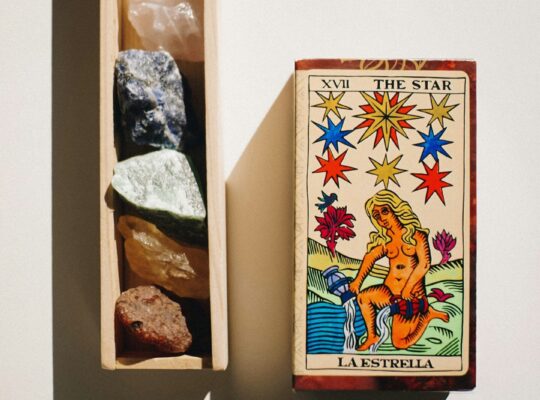Tarot cards are much more than just a tool for divination; they are rich in history, mystery, and cultural significance. From their origins as a simple card game to becoming a cornerstone of spiritual guidance, Tarot has captivated people for centuries. In this article, we will explore the fascinating history of Tarot reading, from its earliest days to its current role in personal growth and divination.
The Origins of Tarot Cards
The exact origins of Tarot cards are shrouded in mystery. Many theories exist, but one thing is clear: Tarot cards have a long and intriguing history that spans multiple cultures and centuries.
Early Beginnings: The Game of Tarot
The earliest decks of Tarot cards appeared in the 15th century in Europe, specifically in Italy. These early decks were used as playing cards, much like any other deck of cards today. Tarot was not initially seen as a tool for divination; rather, it was part of a popular card game. The earliest surviving Tarot deck is believed to be the Visconti-Sforza deck, created for the ruling family of Milan in the 1440s.
The structure of the Tarot deck includes 78 cards, divided into two main sections: the Major Arcana and the Minor Arcana. The Major Arcana consists of 22 cards, each representing significant themes or stages of life, while the Minor Arcana mirrors a traditional deck of playing cards with four suits—Cups, Pentacles, Swords, and Wands.
Mystical Influences and the Shift to Divination
Although Tarot cards were initially used for play, it wasn’t long before they began to take on mystical and spiritual meanings. Some historians suggest that the shift from playing cards to divination tools occurred during the 18th century in Europe, when people began associating Tarot with the occult and esoteric traditions.
The most notable early figure to link Tarot with mysticism was the French scholar Jean-Baptiste Alliette, who went by the name Etteilla. In the 1780s, Etteilla published a guide to Tarot reading, associating the cards with astrology, numerology, and ancient Egyptian wisdom. This marked the beginning of Tarot’s transformation into a tool for fortune-telling and spiritual guidance.
In the 19th century, Tarot became even more closely linked with the occult. Many influential thinkers and mystics, including those involved in the Hermetic Order of the Golden Dawn, began using Tarot as a means of tapping into hidden spiritual knowledge. Tarot was no longer just a game—it was a gateway to the divine.
The Evolution of Tarot in the 19th and 20th Centuries
As the interest in the mystical and the occult grew in the 19th and early 20th centuries, Tarot became more widely recognized as a tool for divination. One of the most influential developments in Tarot history came with the publication of The Tarot (1910) by Arthur Edward Waite, a member of the Hermetic Order of the Golden Dawn. This book accompanied the release of the now-famous Rider-Waite-Smith Tarot deck, which is still one of the most widely used decks in Tarot readings today.
The Rider-Waite deck was revolutionary in that it featured detailed illustrations on all 78 cards, as opposed to earlier decks that only had symbolic designs. Waite, along with artist Pamela Colman Smith, imbued each card with rich imagery meant to convey deep meanings and symbolism. This made the cards more accessible to readers, allowing them to engage with the Tarot on a more intuitive level.
Around the same time, Tarot began to gain popularity in spiritualist circles. People turned to Tarot readings not only for entertainment but also for guidance during difficult times. The symbolism and images on the cards were believed to provide insights into one’s life, relationships, and future. The rise of Spiritualism in the late 19th century only fueled the popularity of Tarot readings as a means of contacting spirits and receiving guidance from beyond.
Tarot in the Modern World
Today, Tarot cards are still widely used as a tool for spiritual insight, self-reflection, and personal growth. Over the years, Tarot has evolved from a mystical tool tied to occult traditions to a popular practice embraced by people from all walks of life. While Tarot is still closely associated with divination, many people now use it for more personal purposes, such as gaining clarity on specific issues, understanding their emotional landscape, or simply as a form of meditation.
A Tool for Self-Reflection and Personal Growth
Modern Tarot readers have expanded the ways in which Tarot is used. Today, Tarot is often viewed less as a means of predicting the future and more as a way to gain insight into one’s current life situation. Many contemporary readers encourage clients to use Tarot cards as a mirror to reflect on their emotions, challenges, and desires. In this sense, Tarot is seen as a valuable tool for personal development.
For example, the cards of the Major Arcana represent archetypal life stages, such as The Fool (representing new beginnings) or The Empress (symbolizing creativity and abundance). When these cards appear in a reading, they encourage the querent to think about where they are on their own journey and what steps they need to take to move forward.
Tarot in Popular Culture
The resurgence of Tarot in popular culture over the last few decades has also contributed to its widespread acceptance. Tarot cards appear in movies, television shows, and books, often symbolizing mystery, magic, or fate. These portrayals have made Tarot more accessible and appealing to a broader audience.
Additionally, Tarot has been embraced by social media influencers, spiritual guides, and wellness communities. Many readers now offer online Tarot readings, workshops, and digital resources, further expanding the reach of this ancient practice.
The Diverse Decks of Today
Today, there are countless variations of Tarot decks. While the Rider-Waite-Smith deck remains the most popular, many different artists have created their own interpretations of the Tarot. From modern, minimalist decks to those inspired by themes such as nature, pop culture, and mythology, there is a Tarot deck for everyone.
Some readers may prefer a deck with a more traditional design, while others may gravitate toward decks with contemporary or whimsical artwork. Regardless of the style, the symbolism and messages of the Tarot remain timeless.
Conclusion
The history of Tarot is a fascinating journey through time, blending mysticism, art, and spirituality. What began as a card game in 15th-century Italy has transformed into a powerful tool for self-discovery and guidance, with roots in mysticism and the occult. Whether used for divination, meditation, or personal growth, Tarot continues to be a source of insight for people all around the world.
As Tarot evolves, so too does our understanding of its power. It remains a symbol of personal transformation, offering a way for individuals to connect with their inner wisdom and navigate life’s challenges. Whether you’re seeking answers to specific questions or simply exploring the cards for deeper meaning, Tarot’s rich history ensures it will continue to offer insights for generations to come.




